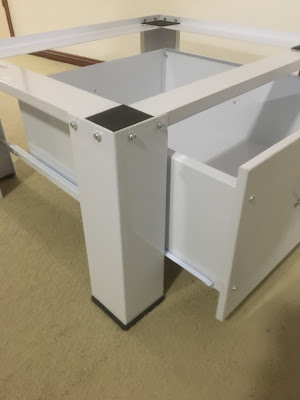Does Your O-Ring Freeze like The Challenger?
Marjie and I watched a movie about the Challenger disaster, when the space shuttle exploded over Cape Canaveral, Florida, just seventy-three seconds after lift-off, on 28th January 1986.
All seven crew were killed. “Here was no sacrifice for the sake of knowledge or science; they were lives expendable in a tale of political ambition and corporate greed” (TV Scene, the Sunday Mail, 29th April 1990.)
The movie looked at the physical and emotional demands of Astronaut training, the arguments over safety standards, and critical decisions made in the lead up to the 1986 Challenger mission.
Challenger did not actually “explode”, rather, it broke apart.
Challenger did not actually “explode”, rather, it broke apart.
Disintegration of the vehicle began after an O-ring seal in its right solid rocket booster (SRB) failed at lift-off.
The O-ring was not designed to fly under unusual conditions such as in this launch.
Its failure caused a breach in the SRB joint it sealed, allowing pressurised burning gas from within the solid rocket motor to reach the outside and impinge upon the adjacent SRB aft field joint attachment hardware and external fuel tank.
This led to the separation of the right-hand SRB’s aft field joint attachment and the structural failure of the external tanks. Aerodynamic forces broke up the orbiter.
The exact timing of the deaths of the crew is unknown; several crew are known to have survived the initial breakup of the aircraft.
The exact timing of the deaths of the crew is unknown; several crew are known to have survived the initial breakup of the aircraft.
The shuttle had no escape system and the impact of the crew compartment with the ocean surface was too violent to be survivable.
The movie ends as the space shuttle lifts off the launching pad, and does not show the actual break-up.
The movie ends as the space shuttle lifts off the launching pad, and does not show the actual break-up.
Instead, just before the credits roll, the actors portraying the crew speak some compelling lines composed by John Gillespie Magee Jr (1922-1941).
Magee was a Pilot Officer in the Canadian Air Force in England in 1941. He wrote this sonnet, “High Flight” after he had flown in a Spitfire MK1 for the seventh time, up to 10,000 metres.
As he orbited and climbed upward, he was struck by words he had read in another poem, “To touch the face of God” from “The Blind Man Flies”, by Cuthbert Hicks. Magee was killed in a mid-air collision, whilst on a training mission, just over the hamlet of Roxholme, at 11:30am, on 11th December 1941. He was 19 years of age.
Oh! I have slipped the surly bonds of Earth,
And danced the skies on laughter-silvered wings;
Sunward I’ve climbed, and joined the tumbling mirth
of sun-split clouds, - and done a hundred things
you have not dreamed of – wheeled and soared and swung
High in the sunlit silence. Hovering there,
I’ve chased the shouting wind along, and flung
My eager craft through footless halls of air.
Up, up the long delirious burning blue,
I’ve topped the wind-swept heights with easy grace
Where never lark nor even eagle flew
And, while with silent lifting mind, I’ve trod
The high un-trespassed sanctity of space,
Put out my hand, and touched the face of God.
Magee was a Pilot Officer in the Canadian Air Force in England in 1941. He wrote this sonnet, “High Flight” after he had flown in a Spitfire MK1 for the seventh time, up to 10,000 metres.
As he orbited and climbed upward, he was struck by words he had read in another poem, “To touch the face of God” from “The Blind Man Flies”, by Cuthbert Hicks. Magee was killed in a mid-air collision, whilst on a training mission, just over the hamlet of Roxholme, at 11:30am, on 11th December 1941. He was 19 years of age.

Comments
Post a Comment